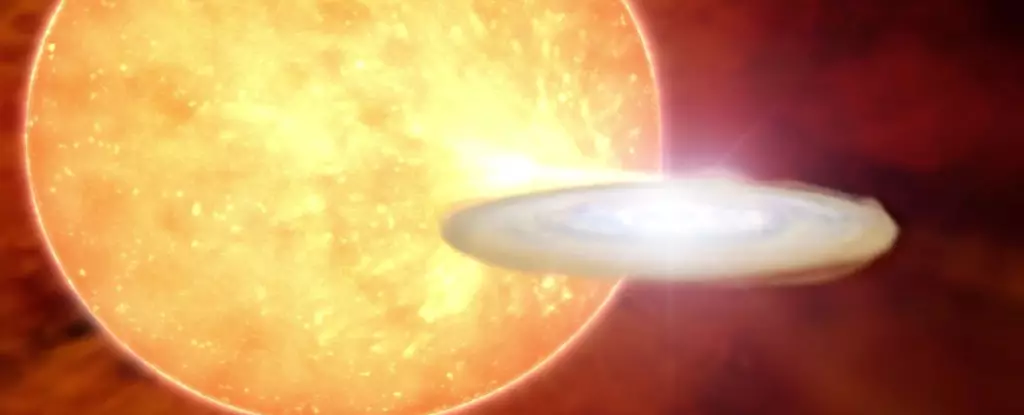T Coronae Borealis, often affectionately dubbed ‘T CrB’ and known as the ‘Blaze Star’, has captivated the interest of astronomers and stargazers alike as it teeters on the brink of an anticipated resurgence. Initially projected to emerge as the premier astronomical spectacle for 2024, we find ourselves in early 2025, still holding our breath as we await this stellar occurrence. Historically, T CrB has shown itself to be quite the enigma, embodying the beauty and unpredictability of celestial phenomena.
A Historical Context
The journeys of stars like T CrB can be traced back to notable observations. Discovered by astronomer John Birmingham in 1866, this recurrent nova has a cycle culminating in brightness roughly every 80 years. Its last notable outburst occurred in February 1946, marking 2026 as the next significant anniversary. Situated approximately 2,000 light-years away in the complex constellations of Hercules, Corona Borealis, and Serpens Caput, T CrB usually resides quietly below a magnitude of +10. However, during a burst, it has the potential to blaze brightly at +2, rivaling even the primary star of its constellation, Alpha Coronae Borealis, also known as Alphecca.
Currently, T CrB has an ideal ascent in the eastern sky around midnight, granting observers an excellent window to capture its brilliance. As we transition through the early months of 2025, conditions will only improve, making astronomers’ hopes rest on the possibility of witnessing this celestial event. However, the latter part of November proved to be less opportune due to the Sun obscuring visibility. As the star shifts into the evening sky, the excitement around its potential emergence builds, tantalizingly close yet still obscured by the cosmos.
The Nature of T Coronae Borealis
Astrophysical structures like T CrB belong to two-star systems. In these configurations, a red giant star transfers material onto a white dwarf companion, a process that accumulates until a dramatic outburst—a nova—occurs. Recent spectral analyses have hinted at significant changes in the star’s behavior, particularly the H-alpha line. Gesesew Reta from the S.N. Bose National Centre for Basic Sciences has pointed out that such fluctuations might denote a forthcoming eruption; however, caution is warranted. The unpredictable nature of novae limits definitive conclusions regarding their eruptions, necessitating a broader and deeper analysis of incoming data.
While the allure of T CrB is undeniable, it’s crucial to temper expectations as the star approaches its predicted eruption. Though the anticipated brightness of +2 magnitude may allow it to be viewed with the naked eye, expectations should be calibrated away from hyperbolic claims of being the “Brightest Star Ever!” The novelty of recurrent novae like T CrB is indeed special, given the rarity of such occurrences—there exist roughly only half a dozen in known celestial catalogs. This sets T CrB apart as an object of scientific scrutiny and public fascination.
The Role of Modern Astronomy
As anticipation mounts, it is certain that scientific communities will seize the opportunity to study T CrB. Renowned observatories such as the James Webb Space Telescope (JWST) and the Hubble Space Telescope are expected to contribute valuable data, enriching our understanding of the dynamics involved in recurrent novae. The American Association of Variable Star Observers (AAVSO) has also weighed in with updates and prospects related to T CrB, highlighting its importance in both community and scientific discussions.
In essence, the journey of T Coronae Borealis reminds us of the exquisite dance of the cosmos—a blend of expectation, mystery, and wonder. As we peer into the heavens, the possibility of witnessing its bright ascendance serves as a poignant reminder of our ongoing quest to understand the universe. For now, enthusiasts can certainly take a moment each clear evening, glance toward Corona Borealis, and hope for a spark of brilliance on the horizon. The waiting game may be tedious, but for those captivated by the stars, the potential rewards are well worth the watchful eye.


Leave a Reply